How many calories are in a cup of coffee?

Whether you’re focused specifically on weight loss or you’re simply keen on leading a healthy lifestyle, it can be all too easy to overlook the impact of your daily coffee ritual on your diet. So how many calories are in a cup of coffee?
Depending on your coffee drink of choice, the answer might surprise you because the coffee on its own is an extremely low-calorie option, with just 2 calories per cup (according to the research of USDA – U.S. Department oF Agriculture). But once you start adding milk and sugar to the mix, those calories quickly add up – for instance, Starbucks’ Pumpkin Spice Latte delivers 300 calories for a 12-ounce serving (and that’s nowhere near the largest size on the menu!).
Ready to learn how your favorite cup of caffeinated bliss compares to the rest? Read on for a breakdown of coffee’s calorie content and what it means for your health.
First things first – what is a calorie?
A calorie is a unit of energy. Technically, it’s the amount of energy needed to raise the temperature of one kilogram of water by one degree Celsius, but it’s also used to measure the amount of energy in the food and drink you consume (when it’s known as the kilocalorie).
Your body turns the foods you eat into energy through a process called metabolism, and it uses the resulting energy to perform its daily functions – breathing, running, digesting, and more.
All of these activities burn calories. In order to maintain consistent body weight, the calories you consume and the calories you expend each day must be equal; if you must burn more calories than you take in, you lose weight, and if you take in more calories than you burn, you gain weight.
But while all calories contain the same amount of energy, not all calories are created equal. Some foods – and, therefore, some calories – deliver more nutrients along with the energy they provide. That’s why 100 calories’ worth of broccoli is generally a healthier choice than 100 calories of chocolate digestives (we still love a good biscuit, though…).
Coffee and your metabolism
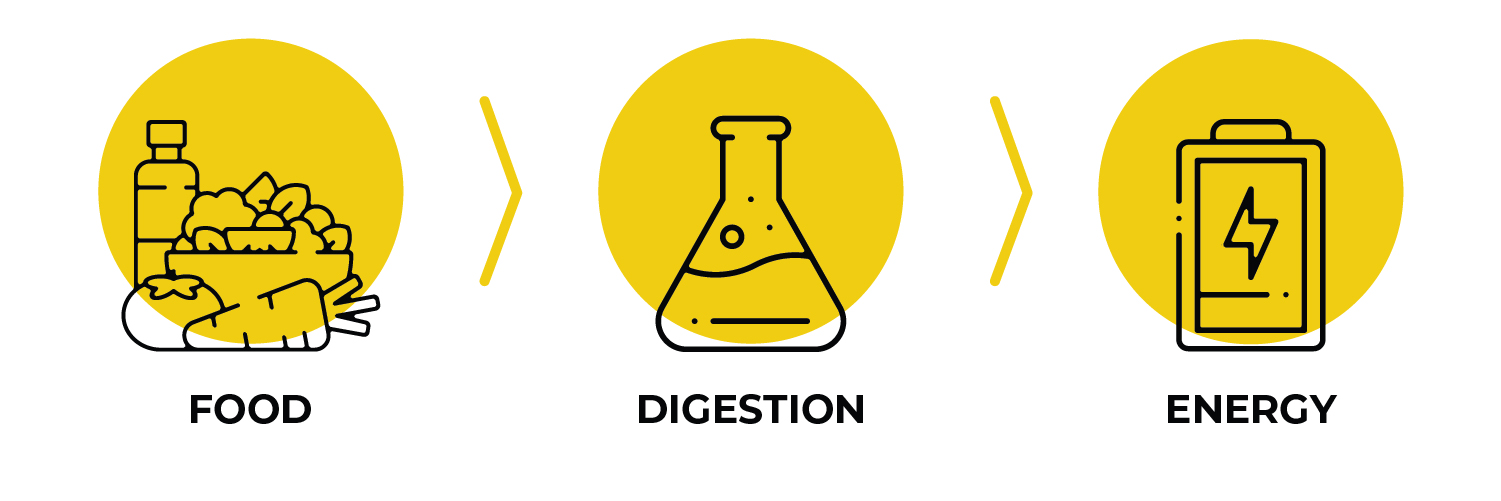
So how does coffee fit into the picture? Obviously, coffee contains calories, but there’s more to it than that.
Perhaps you’ve heard that coffee can help you lose weight. While it may sound like the outlandish dream of some passionate espresso lover, there is actually a science to support this concept – at least to a certain extent.
Some studies have shown that the caffeine in coffee can speed up your resting metabolic rate – that is, the rate at which your body burns calories when it’s completely at rest.
This means that caffeine may help you burn more calories than you normally would. However, it doesn’t automatically translate to weight loss. In order to lose weight, you still need to expend more calories than you consume. No amount of coffee can change that! As you may imagine, caffeine by itself is specific as well, so if you want to learn more about it and about its amount in your cup of coffee, you can read it in our article here.
Calories in different coffee drinks
Now that we know how many calories there are in black coffee, let’s take a look at the calories content of other coffee beverages.
Milk and sugar are usually responsible for the added calories in popular coffee drinks. So how many calories in a cup of coffee with milk and sugar? The exact number will vary depending on the type and amount of milk and sugar used.
Milky coffee can mean different things to different people. Some prefer a splash of skimmed milk in their filter coffee; others want a venti latte made with full-fat milk. These two drinks will have vastly different calorie counts! Have a look at the calories in different types of milk to see what we mean (according to the USDA):
- Skimmed milk: 10 calories per ounce (about 30ml)
- Semi-skimmed milk: 15 calories per ounce (about 30ml)
- Full-fat milk: 19 calories per ounce (about 30ml)
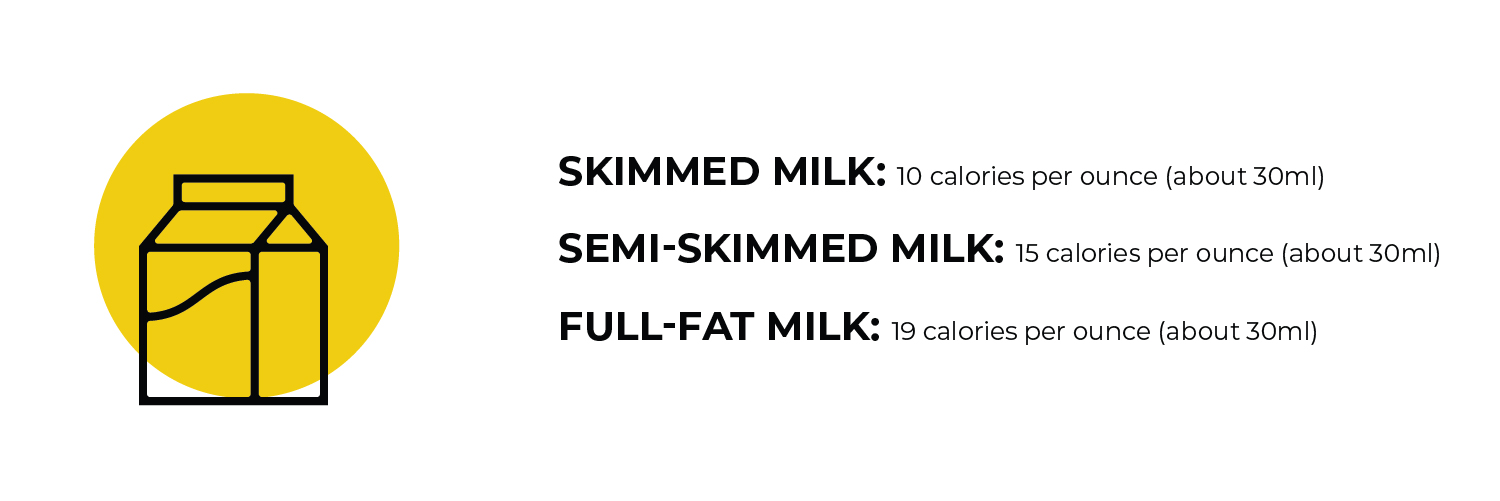
The same is true for sugar. A teaspoon of sugar contains 16 calories, but some coffee drinkers prefer to use flavored syrups that contain different proportions of sugar:
- White sugar: 16 calories per teaspoon
- Flavoured Starbucks syrup: 20 calories per single pump (¼ oz)
- Agave syrup: 21 calories per teaspoon
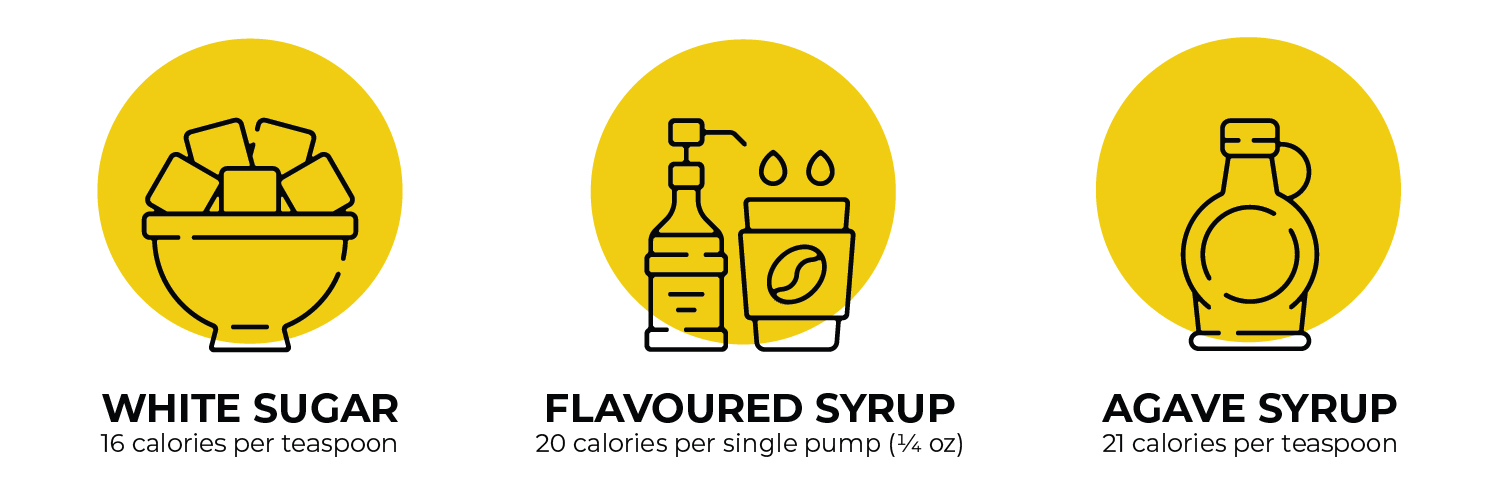
What does all of this mean for your coffee of choice? Here’s how the calorie counts of popular coffee drinks compare:
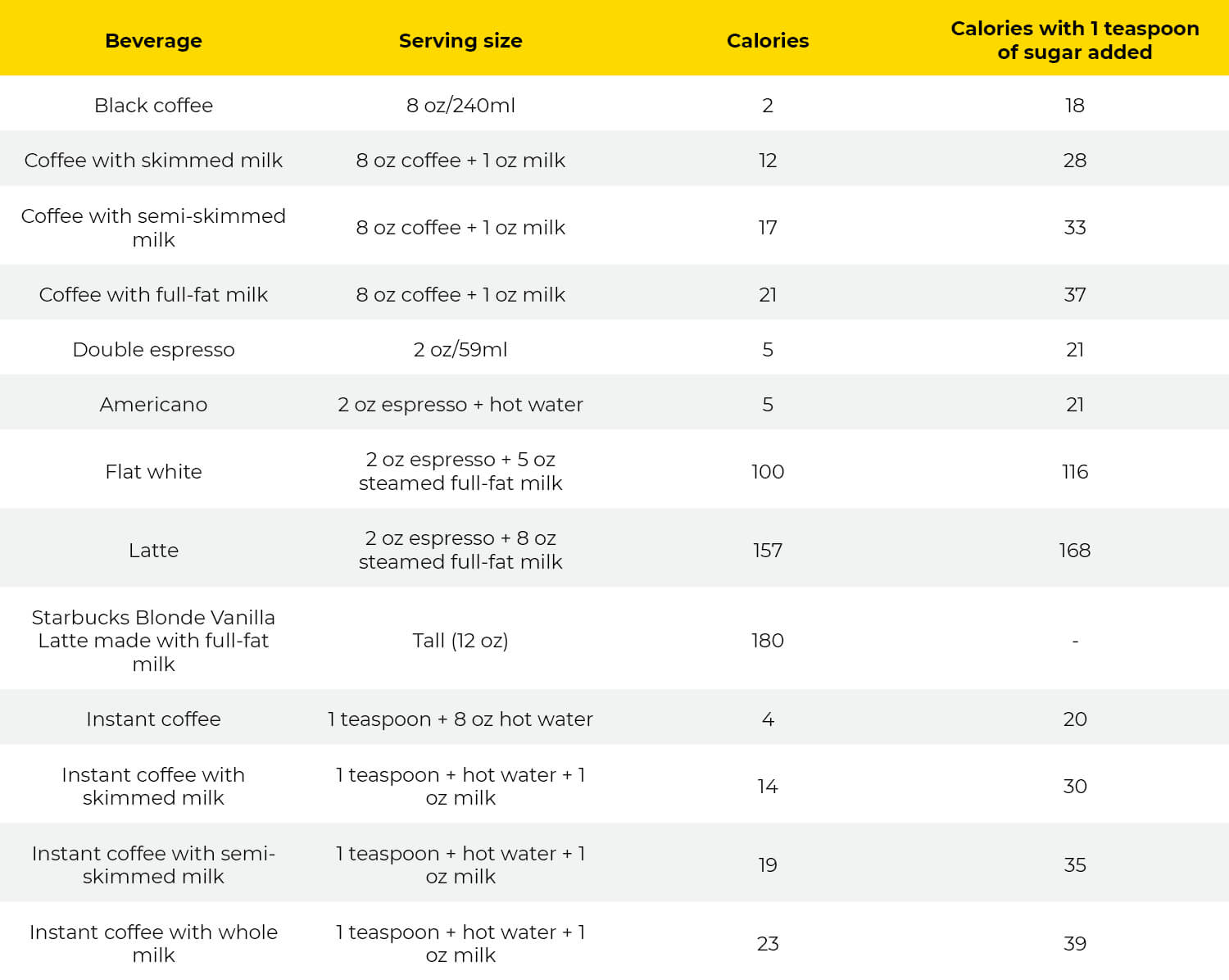
Is it healthier to use plant-based “milk” or dairy in coffee?
Some people prefer to use alternatives to dairy milk in their coffee – oat milk, almond milk, and soy milk are all popular options both in coffee shops and at home for environmental and health reasons. But are they actually better for you than dairy?
If you’re lactose intolerant, then yes. But for people who aren’t allergic to dairy, the answer isn’t so clear.
The nutritional value of plant-based milk differs drastically by brand, so you have to be careful about the type you choose. According to Harvard professor Vasanti Malik, “If you are going to switch to plant-based milk, be certain to read the label and find a product that contains good amounts of protein, vitamin D, iron, and calcium.”
In terms of calories, here’s how plant-based milk measures up:
- Almond milk (unsweetened): 4 calories per ounce (about 30ml)
- Soy milk: 13 calories per ounce (30ml)
- Oat milk (Oatly Barista brand): 18 calories per ounce (about 30ml)
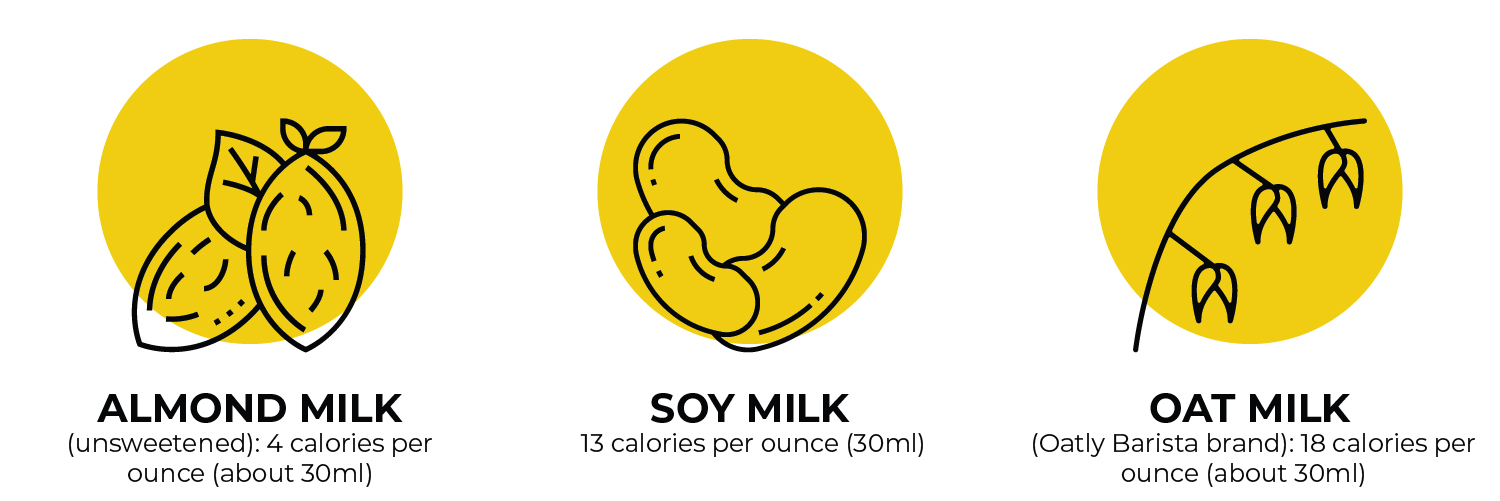
The bottom line
If you drink a couple of cups of milky, sugary coffee each day but don’t factor them into your diet, you could be consuming quite a few extra calories.
The scientific study by the University of Illinois at Urbana-Champaign found that people who drink their coffee black consume an average of 69 fewer calories per day than those who add sweeteners and milk. So if you’re looking to cut back on your calorie intake, swapping your morning latte with a double pump of vanilla syrup for a coffee with a kiss of milk could help you achieve your goals.
Still, all coffee drinks can be a part of a healthy lifestyle – just as long as the high-sugar, high-fat versions are an occasional treat rather than an everyday occurrence, and you’re conscious of what you’re consuming.
As the renowned author, Fran Lebowitz wrote:
“Food is an important part of a balanced diet.” And we think coffee certainly is, too!
FAQ
Q: What is a calorie?
A: A calorie is a unit of measurement that describes the amount of energy contained in food and drink.
Q: How many calories does coffee have?
A: Black coffee on its own is a low-calorie drink, with just 2 calories per cup. However, adding milk and sugar increases the calorie count.
Q: How many calories are there in a cup of coffee with skimmed milk?
A: An 8 oz cup of coffee with 1 oz of skimmed milk has 12 calories.
Q: How many calories are there in a cup of coffee with semi-skimmed milk?
A: An 8 oz cup of coffee with 1 oz of semi-skimmed milk has 17 calories.
Q: How many calories are there in a cup of coffee with cream or full-fat milk?
A: In the US, coffee cream is typically half-and-half – a dairy product with about half as much fat as heavy cream. An 8 oz cup of coffee with 1 oz of half-and-half contains 42 calories. In the UK, full-fat milk is often used for a richer dairy option. An 8 oz cup of coffee with 1 oz of full-fat milk has 21 calories.
Q: How many calories are in a cup of coffee with milk and sugar?
A: A teaspoon of sugar contains 16 calories. Using the information above, coffees with milk and sugar have the following calorie counts:

